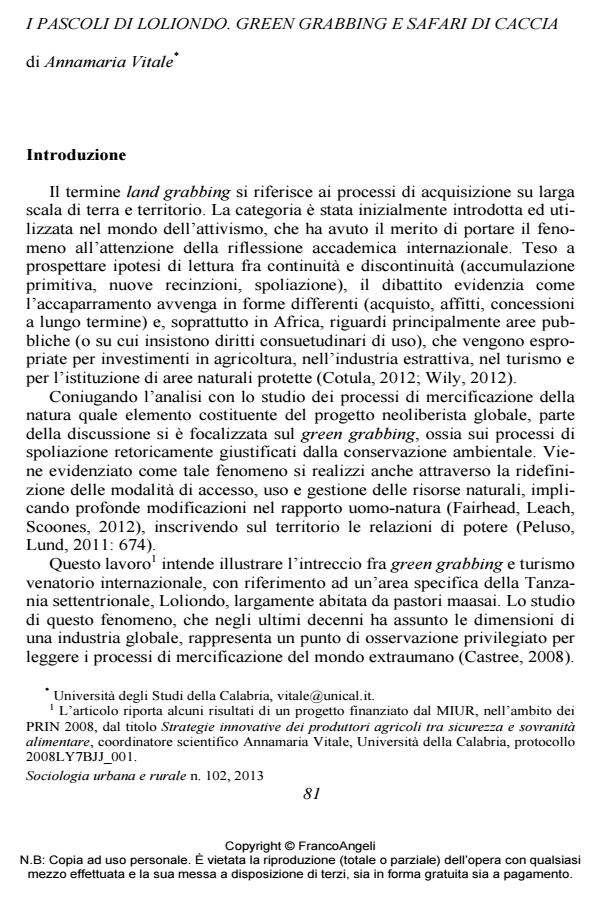The Grazing Land of Loliondo. Green grabbing and hunting safari
Journal title SOCIOLOGIA URBANA E RURALE
Author/s Annamaria Vitale
Publishing Year 2013 Issue 2013/102
Language Italian Pages 15 P. 81-95 File size 211 KB
DOI 10.3280/SUR2013-102006
DOI is like a bar code for intellectual property: to have more infomation
click here
Below, you can see the article first page
If you want to buy this article in PDF format, you can do it, following the instructions to buy download credits

FrancoAngeli is member of Publishers International Linking Association, Inc (PILA), a not-for-profit association which run the CrossRef service enabling links to and from online scholarly content.
In recent decades hunting tourism has assumed the proportion of a global industry, as wildlife has been turned into objects of economic utility. The paper examines the interplay between green grabbing and hunting tourism in Loliondo, an area in northern Tanzania home to Maasai pastoralists. It shows how the leasing of a hunting concession on village lands by the central government has resulted into restrictions on range resources. This situation has lead to local resistance and struggle over land rights.
Keywords: Green Grabbing; Land Grabbing; Hunting Tourism; Tanzania; Maasai; Conservation of Nature.
Annamaria Vitale, I pascoli di loliondo. green grabbing e safari di caccia in "SOCIOLOGIA URBANA E RURALE" 102/2013, pp 81-95, DOI: 10.3280/SUR2013-102006